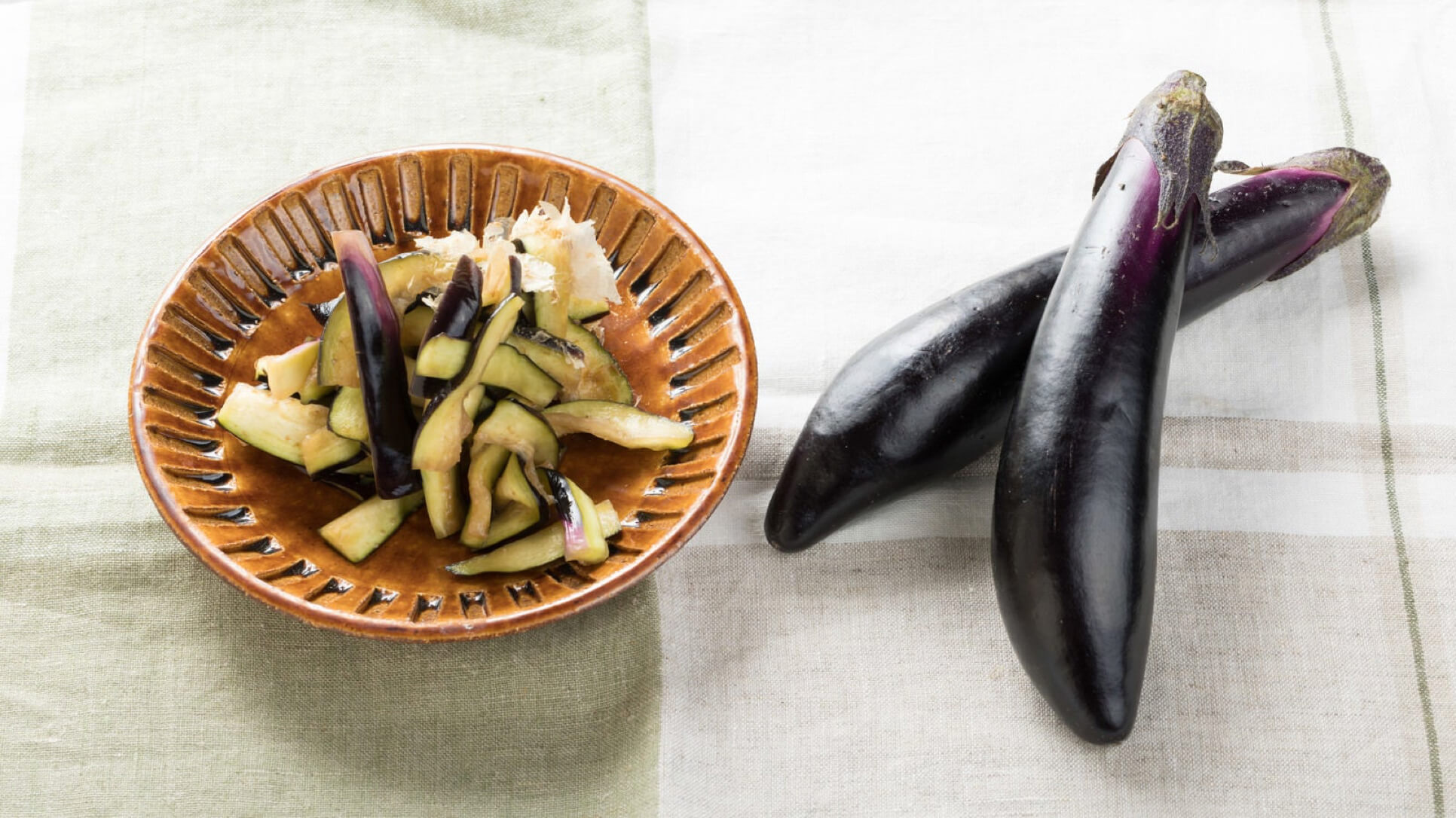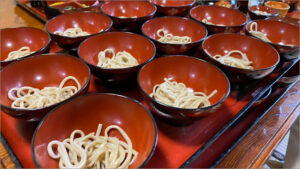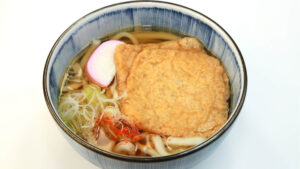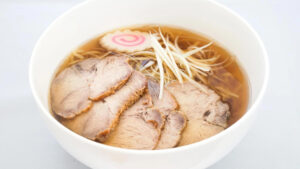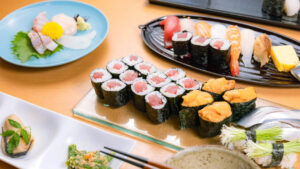Pickles—known as tsukemono in Japanese—are an essential part of the Japanese dining experience. From umeboshi (pickled plums) to takuan (pickled daikon) and shibazuke (Kyoto-style pickles), these fermented delights have long been loved as the unsung heroes of traditional Japanese cuisine.
In this article, we’ll introduce 10 of Japan’s most iconic pickles while exploring their deep historical roots, cultural significance, health benefits, and even modern ways to enjoy them—both in Japan and abroad.
What might seem like just a salty side dish is actually a treasure trove of flavor, nutrition, and culinary wisdom. Let this guide help you discover the rich world of Japanese fermented foods and the charm of tsukemono.
Contents
Why Are Japanese Pickles So Special?
Japanese pickles, known as tsukemono, are more than just preserved vegetables—they play an important role in traditional Japanese cuisine. Thanks to the wide variety of ingredients and unique fermentation methods, tsukemono offer diverse flavors, aromas, and textures that bring both harmony and visual appeal to the dining table. Deeply rooted in Japanese food culture and seasonal living, they are truly the “unsung heroes” of washoku (Japanese cuisine).
The History and Role of Pickles in Japanese Cuisine
Origins as a Preserved Food
Japanese pickles developed as a method of preserving seasonal vegetables before refrigeration was available. By using salt, vinegar, rice bran, or miso to pickle vegetables, people were able to store food through winter or take it on long journeys. Over time, pickles evolved beyond preservation—fermentation increased their nutritional value and umami, making them an essential part of everyday meals.
Essential in the Ichiju Sansai Meal Structure
In the traditional “ichiju sansai” (one soup, three dishes) format, pickles are typically served as one of the small side dishes. Though modest in portion, their saltiness and acidity help refresh the palate and enhance the enjoyment of the main dishes. Their color and texture also provide contrast, contributing to a well-balanced and satisfying meal.
Pickles and Japan’s Seasonal Traditions
Pickles are deeply intertwined with Japan’s seasonal customs and daily life. For example, umeboshi (pickled plums) are valued in summer for their appetite-boosting and antibacterial effects, while pickled red turnips and traditional varieties like hinona-zuke are featured on New Year’s tables. Many households pass down pickle recipes through generations, making them a symbol of family tradition and memory.
Diverse Pickling Methods and Ingredients
One of the reasons Japanese pickles are so unique—even on a global scale—is the incredible variety of ingredients and techniques used. Recipes vary by season, region, and even household, with each approach offering a completely different flavor from the same vegetable. Here, we introduce three fundamental methods that represent the essence of Japanese pickling.
Salt Pickling: The Art of Salt and Time
The simplest and most traditional pickling method is salt pickling. Vegetables are sprinkled with salt, which draws out moisture and allows the flavors to seep in. This method preserves the food well and enhances the natural taste of ingredients like napa cabbage, cucumber, and daikon radish. From quick “asazuke” (light pickles) to deep-aged “furuzuke,” the duration of pickling greatly affects the taste and texture, offering a range of experiences.
Nukazuke: The Blessing of Fermentation
Nukazuke is a representative of Japan’s fermented food culture. Vegetables are buried in a bed of fermented rice bran called nuka-doko, which is made from rice bran, salt, and water. This mixture is rich in lactic acid bacteria and yeast, enhancing the vegetables’ nutritional value and adding a distinctive tangy flavor. Common ingredients include cucumbers, eggplants, and daikon. Maintaining the nuka bed—stirring it daily and adjusting its balance—is part of the charm and ritual of making nukazuke at home.
Miso and Vinegar Pickling: Flavorful Variations
Beyond salt and rice bran, many regions across Japan enjoy pickling with miso or vinegar. Miso pickling infuses vegetables or fish with the rich umami and aroma of miso, resulting in a deep, savory taste. Vinegar pickling provides a refreshing tartness and pairs beautifully with ingredients like lotus root, carrots, and ginger. Other popular variations include soy sauce pickling, sweet vinegar pickling, and sake lees pickling, making for a virtually endless array of delicious possibilities.
The Depth of Flavor and Texture
One of the key reasons Japanese pickles are so beloved is their incredible range of flavors and textures. Though they may appear simple at first glance, each bite offers a different sensation, adding depth and dimension to the overall dining experience.
From Crisp to Tender: A Variety of Textures
The charm of tsukemono lies in how they preserve the natural texture of vegetables while enhancing it through different pickling methods and durations. For example, lightly pickled cucumbers have a fresh crunch, while aged napa cabbage becomes soft and almost melt-in-your-mouth. Even using the same ingredient, you can enjoy textures that range from crisp and snappy to smooth and tender—a uniquely Japanese pleasure.
Balanced Acidity, Saltiness, and Umami
The flavor of Japanese pickles isn’t simply salty. Natural acidity from lactic acid fermentation, subtle saltiness that brings out the sweetness of vegetables, and deepened umami developed over time all come together to create a nuanced taste profile. Well-aged nukazuke and furuzuke, in particular, can develop complex, cheese-like richness that surprises and delights.
Perfect Pairings with Rice and Sake
Pickles are not only ideal companions to a bowl of white rice—they’re also widely enjoyed as accompaniments to alcoholic beverages. Umeboshi pairs especially well with steamed rice, often found in onigiri (rice balls) or bento boxes. Takuan and shibazuke, meanwhile, serve as refreshing palate cleansers after a meal. The deep umami and aroma of fermented pickles also make them excellent matches for sake or shochu during evening drinks.
Must-Try Japanese Pickles
Japan is home to an incredible diversity of pickles, with recipes passed down through generations and varying by region and household. In this section, we introduce some of the most iconic and well-known types of Japanese pickles, recognized not only domestically but also gaining attention around the world. Each one comes with its own unique charm and health benefits.
Umeboshi (Pickled Plums)
How They’re Made and What They Taste Like
Umeboshi are traditional preserved plums made by pickling ripe ume fruit in salt and red shiso leaves, followed by sun-drying. They are known for their bold salty and sour flavor—just one can make a strong impression. Variations include sweeter types made with honey and “shiroboshi” plums, which are pickled without shiso. These pickles can be stored for a long time, and their flavor becomes milder and deeper as they age.
Health Benefits: Fatigue Recovery and Antibacterial Effects
Umeboshi are rich in citric acid, which helps break down lactic acid in the body and relieve fatigue. For centuries, they’ve been used to fight summer heat exhaustion and serve as a trusted travel companion. Their high acidity also inhibits bacterial growth, making them effective in preventing food spoilage. The custom of placing an umeboshi in a bento box reflects this practical wisdom.
Perfect for Onigiri and Bento
Umeboshi are a quintessential part of Japan’s rice ball (onigiri) culture. Placing one in the center of a rice ball adds a burst of flavor and enhances the rice’s shelf life. Their vivid color also adds visual appeal to lunch boxes. The sharp sourness and saltiness of umeboshi perfectly complement the simplicity of plain rice, enhancing its natural flavor.
Takuan (Pickled Dried Daikon Radish)
Takuan is one of the most beloved and recognizable types of Japanese pickles. Known for its vibrant yellow color and satisfying crunch, it has been a staple in both Buddhist vegetarian cuisine and everyday household meals. Today, its unique flavor is also appreciated in many countries outside Japan.
Traditional Pickling Method
Authentic takuan is made by harvesting daikon radishes in autumn, sun-drying them to reduce moisture, and then pickling them in a wooden barrel with rice bran, salt, kombu (kelp), and chili peppers. The fermentation process takes over a month, resulting in a distinctive umami flavor, aroma, and crisp texture. While many store-bought versions now use coloring and flavor enhancers, traditional homemade takuan—crafted with care and time—offers a much deeper and more complex taste.
Digestive Benefits and Dietary Fiber
Takuan is rich in dietary fiber, a result of using sun-dried daikon. This helps regulate the digestive system and supports gut health. When made as nukazuke (rice bran-fermented), it also contains beneficial lactic acid bacteria, enhancing its probiotic effects. As a fermented food, takuan can be a great addition to a daily health-conscious diet.
Modern Culinary Uses
Takuan isn’t just for traditional meals—it can be finely chopped and added to stir-fries, fried rice, or used as a tangy accent in tartar sauce. It’s also famous as a sushi ingredient, especially in the “takuan roll” (also known as shinko-maki). With its bold flavor and crunch, takuan works well not only in Japanese dishes but also in creative fusion and appetizer recipes.
Shibazuke (Traditional Pickles from Kyoto)
Shibazuke is a traditional type of Japanese pickle said to have originated in the rural village of Ohara, located in Kyoto. It is known for its vivid purplish-red color and refreshing tartness. Typically made with eggplant and cucumber, it is seasoned and colored with red shiso leaves, giving it both a beautiful appearance and a complex flavor.
The Perfect Combination of Red Shiso and Eggplant
A classic shibazuke mix includes summer vegetables like eggplant, cucumber, and myoga (Japanese ginger), combined with red shiso leaves. Red shiso not only adds color and aroma, but also provides natural antibacterial and preservative properties. The soft texture of the vegetables, the herbaceous aroma of shiso, and the crisp sourness come together to create a flavor that’s especially appetizing in the hot summer months.
Fermentation and Probiotic Benefits
Traditionally, shibazuke is made by salting the vegetables and allowing them to naturally ferment, which encourages the growth of lactic acid bacteria. This fermentation process develops its signature tangy taste and also contributes to gut health. While many commercial versions are flavored with vinegar or seasonings, naturally fermented shibazuke offers a deeper, more authentic flavor—and added health benefits.
Delicious with Rice, Tofu, and More
Shibazuke pairs wonderfully with steamed rice, but it’s also incredibly versatile. It can be finely chopped and placed on chilled tofu, tossed into salads or pasta for a pop of flavor, or mixed into fried rice or seasoned rice dishes. Its bright color and sour-salty flavor make it a perfect accent for simple meals, enhancing both taste and presentation.
Health Benefits of Japanese Pickles
Japanese pickles are more than just a side dish or palate cleanser—they offer a variety of health benefits as well. Fermented pickles in particular are gaining attention for their potential to improve gut health, boost immunity, and support beauty from within. In this section, we’ll first focus on the positive effects that pickles can have on your digestive system.
Supporting a Healthy Gut
The gut is often referred to as the “second brain,” playing a crucial role in not only physical health, but also mental well-being and skin condition. The fermented components and nutrients found in Japanese pickles can help promote a healthy intestinal environment.
Fermented Foods that Boost Good Bacteria
Pickles such as nukazuke and shibazuke, which undergo lactic acid fermentation, are rich in beneficial bacteria. These lactic acid bacteria help increase the population of “good” bacteria in the gut while suppressing harmful bacteria. A balanced gut flora leads to smoother digestion and contributes to overall well-being.
Synergy with Dietary Fiber
Vegetables commonly used in pickles—like daikon radish, cucumber, and cabbage—are naturally high in dietary fiber. When combined with the probiotics from fermentation, this fiber enhances the activity of beneficial gut bacteria, further supporting digestion. This combination is often referred to as the “ideal pairing” of prebiotics and probiotics.
Relief from Constipation and Clearer Skin
A healthy gut promotes regular bowel movements and helps prevent constipation. As waste is expelled from the body more efficiently, skin issues like breakouts and dullness tend to improve. By including even a small amount of pickles in your daily routine, you may see positive changes from the inside out.
Boosting Immunity and Physical Resilience
Japanese pickles also play a valuable role in daily health maintenance and physical well-being. As fermented foods, they not only promote gut health but also provide essential nutrients from vegetables that help support the immune system and reduce fatigue.
The Power of Lactic Acid Bacteria
Fermented pickles such as nukazuke, shibazuke, and aged pickles are rich in lactic acid bacteria. These beneficial microbes contribute to a healthy gut flora, which in turn supports the activation of immune cells. The gut and immune system are closely connected, and maintaining gut health is considered a foundation for building resistance to colds and viruses.
Supplying Vitamins and Minerals
Vegetables used in pickles are packed with nutrients like vitamin C, potassium, and magnesium. Pickles made from dried daikon or cucumber are especially nutrient-dense, allowing you to consume concentrated amounts of vitamins and minerals. Fermentation also enhances nutrient absorption, making even small servings highly effective for daily nutrition.
Helping the Body Adapt to Seasonal Changes
Seasonal transitions—when temperatures and humidity fluctuate—can make the body more vulnerable to illness. Incorporating fermented pickles into daily meals during these times can help regulate immune balance. Even when appetite is low, the tangy flavor and crunchy texture of pickles can stimulate the palate and offer gentle support for maintaining overall health.
Salt Reduction Tips and Healthy Ways to Enjoy Tsukemono
Many people assume that pickles are unhealthy due to their saltiness, but with the right choices and eating habits, they can be enjoyed healthily and contribute positively to your diet. Knowing how to select and consume pickles properly helps you reap their health benefits without excess salt intake.
Choosing Low-Sodium Options
Nowadays, many low-sodium and lightly pickled varieties are available on the market. When selecting store-bought pickles, check the nutrition label for the sodium content—aim for products containing less than 2 grams of salt per 100 grams. Fermented pickles also offer health benefits from lactic acid bacteria, so even small amounts can be satisfying and beneficial.
Mindful Portion Sizes and Timing
Pickles are best enjoyed as a small side dish, with about one to two slices per day being ideal. Eating them alongside rice helps distribute the saltiness and balances the overall flavor. Incorporating pickles into breakfast or lunch allows the body to use the salt throughout the day, minimizing any burden. It’s better to avoid consuming pickles late at night.
Menu Ideas Combining Pickles with Vegetables
Rather than eating pickles alone, pairing them with other vegetable dishes can create a well-balanced meal. For example, use pickles as a salad topping, serve them alongside chilled tomatoes or steamed vegetables, or combine with tofu or natto for a Japanese-style side dish. The salty flavor of pickles acts as a seasoning accent, enhancing the overall taste of the dish.
Enjoying Tsukemono Abroad: How to Incorporate Japanese Pickles into Your Lifestyle
Japanese pickles have attracted attention not only in Japan but also among washoku enthusiasts and health-conscious people worldwide. In recent years, the availability of exported products and recipes has expanded, making it easier than ever to enjoy tsukemono even when living overseas. Here, we introduce how to source and use Japanese pickles abroad.
Where to Find Japanese Pickles Overseas
Even when living outside Japan, there are many ways to enjoy Japanese pickles. You can look for ready-made Japanese products or make your own using local ingredients.
Utilizing Asian Supermarkets and Online Shopping
Many countries have Asian supermarkets specializing in Japanese, Korean, and Chinese foods, where you can find Japanese pickles like takuan, umeboshi, and shibazuke. Additionally, online marketplaces such as Amazon and specialty Japanese food websites offer many products with international shipping options. Both refrigerated and shelf-stable types are available, so choose according to delivery conditions.
Making Homemade Pickles with Local Vegetables
If Japanese vegetables are hard to find, you can still enjoy making pickles at home using fresh local vegetables like cucumbers, carrots, and cabbage. Many simple recipes require only basic seasonings such as salt, vinegar, kombu (kelp), and chili peppers. Homemade pickles allow you to adjust the salt content and customize flavors freely, which is a great advantage.
Storage and Shelf Life Considerations
While pickles are preserved foods, they should generally be refrigerated after opening. Fermented varieties, in particular, can change in flavor quickly if left at room temperature. Always check the expiration dates on store-bought products, and for homemade pickles, consume them within a few days to one week. Use airtight containers to prevent odor transfer and drying out.
Enjoying Tsukemono at the Table: Presentation and Serving Ideas
Japanese pickles are not only delicious but also visually appealing, and a little creativity can enhance the atmosphere of your dining table. Beyond taste, paying attention to color and presentation helps deepen the charm of Japanese cuisine. Simply adding pickles to a simple meal can elevate the entire dining experience.
Adding Color to One-Plate Meals
Tsukemono make a wonderful accent in Western-style one-plate meals. For example, serving red shiso pickles or takuan alongside a hamburger steak or omelet adds vibrant color and creates a pleasing rhythm of flavors. The bright hues of pickles brighten up the plate visually and naturally stimulate the appetite.
Serving in Small Dishes: The Japanese Style
In traditional Japanese dining, pickles are served in small bowls or plates in modest portions. This style helps control portion sizes naturally and creates “ma,” or a sense of space and balance within the meal. Lining up different types of pickles in small dishes adds both aesthetic appeal and enjoyment to the dining experience.
Elegant Touches with Tableware and Utensils
Choosing the right tableware is key to highlighting the appeal of pickles. Using white porcelain, lacquered small plates, or wooden trays helps showcase the colors and textures beautifully. Adding small forks or bamboo picks can effortlessly create a modern Japanese atmosphere. With just a little effort, pickles become a more refined and sophisticated part of your meal.
Expanding the World of Japanese Flavors and Healthy Living with Tsukemono
Tsukemono are not only a reflection of Japanese tradition and seasonal awareness, but also a versatile ingredient that supports daily health. Even a small amount can enhance meal satisfaction and bring rich colors to your dining table. Here, we revisit the benefits of incorporating pickles into your everyday diet.
Why You Should Include Tsukemono in Your Daily Meals
Easily Add Nutritional Value
Tsukemono are convenient dishes that require only cutting and plating to add nutrition to your meal. Fermented pickles, in particular, provide easy access to beneficial lactic acid bacteria, enzymes, and dietary fiber, contributing to overall health maintenance. Even on busy days, it’s simple to add this “plus one” item to your routine without hassle.
A Variety of Flavors to Keep You Interested
The flavors of tsukemono are diverse, ranging from salty and sour to sweet and umami-rich. Methods like light pickling (asazuke), aged pickling (furuzuke), rice bran pickling (nukazuke), vinegar pickling, and miso pickling transform even the same vegetable into distinctly different tastes. Selecting according to season or mood helps prevent monotony and makes daily meals more enjoyable.
Enriching Conversations at the Table
A colorful assortment of tsukemono on the table brightens the visual appeal and sparks conversation. Questions like “Did you make this yourself?” or “Which region is this flavor from?” naturally foster communication among family and friends. Tsukemono offer not only the pleasure of eating but also the joy of sharing stories and experiences.
Getting Started: Tips for Beginners
If you want to incorporate tsukemono into your daily diet but worry about them being too salty or don’t know which ones to choose, you’re not alone. Here are some easy steps for beginners to enjoy pickles without any hassle.
Start with Popular Store-Bought Varieties
A great first step is to try commercially available pickles found at supermarkets or online. Products like low-sodium takuan, honey-flavored umeboshi, and lightly pickled cucumbers are widely available and easy to eat. Pay attention to the salt content and ingredient labels to find options that suit your taste.
Make It a Habit to Enjoy a Small Serving Daily
The ideal way to enjoy tsukemono is in small amounts every day. Adding a little to your breakfast or dinner plate helps the pickles become a natural part of your meal routine. Over time, you’ll likely notice positive effects on your health. Tsukemono also serve as a handy “side dish” when you want to add just one more item to your meal.
Try Variety Packs for Easy Tasting and Comparison
If you’re unsure which pickles suit your palate, variety packs are a great choice. Sampling different flavors in small portions helps you avoid getting bored and discover your favorites. These assortments are widely available online and also make popular gifts.
The Global Spread of Japanese Fermentation Culture
In recent years, growing health awareness has sparked worldwide interest in fermented foods. Among them, Japanese pickles—known as tsukemono—have begun to attract attention. The deep flavors and digestive benefits rooted in centuries of Japanese wisdom are now being appreciated beyond Japan’s borders.
Common Ground with Miso and Soy Sauce
Like miso and soy sauce, which are iconic Japanese fermented seasonings, tsukemono use the process of fermentation to enhance the umami of ingredients. All are crafted through natural microbial activity, resulting in high nutritional value and preservation qualities. Increasingly, people overseas who encounter tsukemono develop interest in the power of fermentation exemplified by these traditional Japanese foods.
The Health Trend and Fermentation Boom
In Western countries, fermented foods such as yogurt, kimchi, and kombucha have surged in popularity. Japanese pickles are gaining recognition as “healthy, natural, and gut-friendly” foods. For those seeking unprocessed, natural diets, traditional Japanese tsukemono are emerging as the next fermented food to try.
“TSUKEMONO” on Tables Around the World
As Japanese cuisine like sushi and miso soup spreads internationally, the word “TSUKEMONO” is gradually becoming familiar worldwide. Tsukemono are served as side dishes in Japanese restaurants and increasingly made at home overseas. With their colorful appearance and wide flavor variety, tsukemono not only add visual appeal but also enrich dining conversations as a “Japanese accent” on tables around the globe—and their presence is expected to grow even more.
